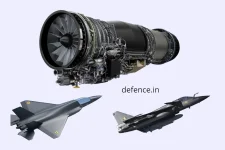- Views: 3K
- Replies: 9
The development of a powerful new engine for the Advanced Medium Combat Aircraft (AMCA) Mk2 is critical to the success of India's ambitious 5th generation fighter jet program, according to former Indian Air Force Chief, Air Chief Marshal R.K.S. Bhadauria.
In a recent interview with News9 Plus, he emphasized the urgency of prioritizing the engine's development to avoid potential delays that could hinder the program's overall progress.
The AMCA program received a significant boost earlier this year with clearance from the Cabinet Committee on Security (CCS), paving the way for crucial funding and accelerated development. While the AMCA Mk1 is set to utilize an upgraded GE F414 engine, the AMCA Mk2 is planned to be powered by an indigenously developed 110kN thrust engine, created in collaboration with a leading foreign aerospace company.
Bhadauria stressed that the AMCA Mk2's ability to compete with other advanced fighter jets hinges on this new engine. The 110kN thrust is essential for achieving the speed, maneuverability, and stealth capabilities expected of a 5th generation fighter. Without a suitable engine, the AMCA's performance could be compromised.
Drawing from past experiences, Bhadauria highlighted the challenges faced during the development of the Kaveri engine for the Tejas Light Combat Aircraft (LCA). The Kaveri project encountered significant delays and ultimately failed to meet the LCA's requirements. He urged that the lessons learned from the Kaveri project should guide the AMCA's engine development process.
To mitigate risks and leverage global expertise, India is reportedly in talks with several international aerospace companies for the joint development of the 110kN engine. This collaboration aims to combine India's growing experience in engine design with the proven capabilities of established engine manufacturers.
The new engine is expected to provide the AMCA Mk2 with supercruise capability, allowing it to sustain supersonic flight without afterburners, enhancing fuel efficiency and overall performance. This advancement will enable the AMCA to excel in a variety of combat scenarios, from air-to-air combat to ground attack missions.
Bhadauria concluded by emphasizing the importance of timely execution in engine development. Any delays, whether due to technical hurdles or bureaucratic processes, could have a ripple effect on the AMCA program's timeline. The AMCA is projected to enter service in the 2030s, with the Mk2 variant, featuring the new engine, following soon after.
This ambitious undertaking reflects India's commitment to strengthening its indigenous defence capabilities and securing a prominent position in the global aerospace arena. The successful development of the 110kN engine will be a crucial step towards achieving this goal.




